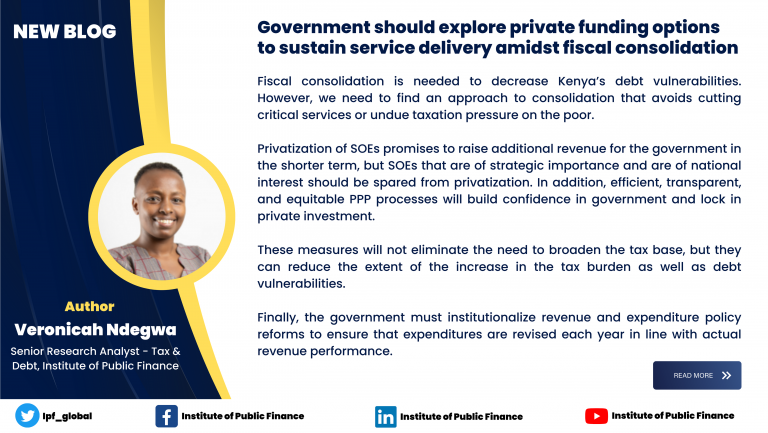The Education sector should set realistic targets that align with the available budget. Despite spending nearly 100 percent of its budget in the 2021/22 fiscal year, the sector continues to face challenges and falls short of meeting its goals. Kenya has one of the highest primary school dropout rates in East Africa, with over 1.2 million children currently out of school, as reported by UNESCO. The shortage of teachers is another critical issue, with an estimated deficit of approximately 60,000 teachers in the country. As a result, classrooms are overcrowded, with teachers having to manage up to 100 students instead of the recommended ratio of 1:40. This overcrowding has negatively impacted the quality of education provided.
Kenya’s education sector is riddled with inequalities. Furthermore, marginalized communities have limited access to education, leading to increased inequality and perpetuating the cycle of poverty. Marginalized communities, including those in rural areas and informal settlements, face additional barriers, including lack of infrastructure, limited resources, and inadequate teacher deployment. Also, Kenya’s national examination results, such as the Kenya Certificate of Primary Education (KCPE) and Kenya Certificate of Secondary Education (KCSE), consistently reveal huge variations in performance across schools and regions where public schools in rural areas are mostly affected by poor performance.
In order to address these gaps, the government allocates a large share of Kenya’s total resources to education every year, but the sector still not meeting targets. We know that the problem in the sector is ambitious targets because even when programs spend their full budgets, they fall short of goals. For instance, in the fiscal year 2021/22, the education sector in Kenya utilized 98 percent of its budget but only managed to achieve an average of 67 percent of its Key Performance Indicators (KPIs), as stated in the 2022 SWG report.
In the FY 2021/22 the Secondary Education programme targeted to construct 1481 new classrooms but only achieved 808 yet it absorbed 96 percent of the allocated budget. The Quality Assurance and Standards programme had a budget absorption of 94 percent but only achieved 44 percent of its KPIs. To improve the quality and standards in schools, the programme targeted 18,500 learning institutions but only managed to assess 13,465 institutions. To facilitate co-curricular activities, 1787 schools were targeted to participate in science fairs organized at the Sub-County level, yet reported performance was 0.
In some cases, programs failed to meet their targets after experiencing budget increases. For instance, the Primary Education Program received a 39 percent budget increase, but its achievement of KPIs, such as providing sanitary towels to schoolgirls, was only 52 percent.
The education sector should base its goals on comprehensive data and analysis in order to identify current performance levels, gaps, and potential areas of improvement. When goals are data-driven, they are more likely to be attainable and can be objectively measured for progress. Also, engage relevant stakeholders in the goal-setting process. This includes representatives from different levels within the sector, as well as external experts and the public. Involving stakeholders ensures that goals are grounded in practicality and reflect the needs of those directly impacted by the sector’s activities. The sector needs to acknowledge potential risks and challenges that may hinder goal achievement. Develop contingency plans to address these risks proactively and demonstrate a realistic understanding of potential obstacles.
Some may argue that the reason the Education sector has failed to meet its targets is not unrealistic targets but underfunding. Increasing the budget allocation would enable the sector to meet its targets more effectively. However, while it is true that underfunding can hinder the Education sector’s ability to achieve its targets, it is important to consider that simply increasing the budget allocation may not guarantee success. Before requesting an increase in the budget, the Education sector should focus on optimizing the utilization of the existing funds. This includes identifying areas of inefficiency, reducing wastage, and improving financial management practices. By ensuring that the available resources are effectively utilized, the sector can maximize the impact of its budget without solely relying on increased funding.
While increased funding is desirable, it is crucial to first align targets with the allocated budget. Setting achievable targets helps in building public confidence and accountability within the Education sector. When targets are met consistently, stakeholders, including parents, teachers, and policymakers, are more likely to support further investments in education. This, in turn, can contribute to increasing funding for the sector over time.
It is important to note that revising targets should not imply accepting low standards or compromising the quality of education. Instead, it means setting realistic goals that consider the available resources and the unique challenges faced by the Education sector. By doing so, the sector can make significant progress in reducing educational disparities, promoting equity, and fostering inclusivity.
Author Felix Masikonte, Project Officer, IPF

 Français
Français 















